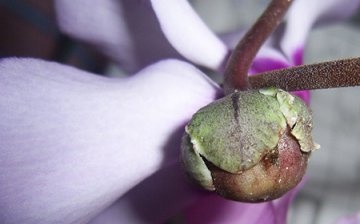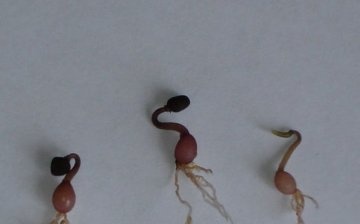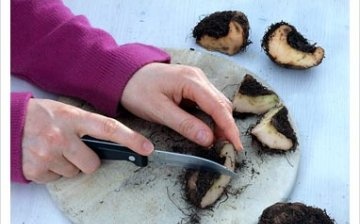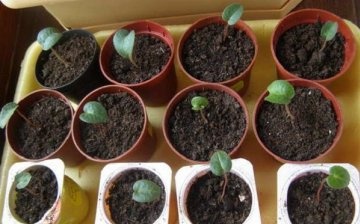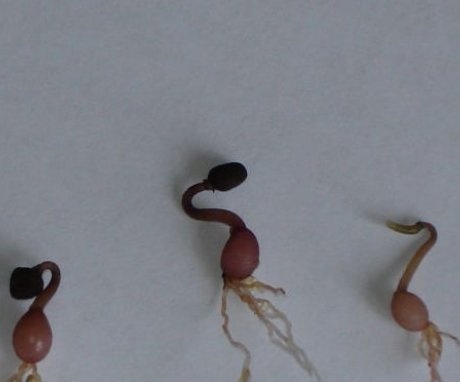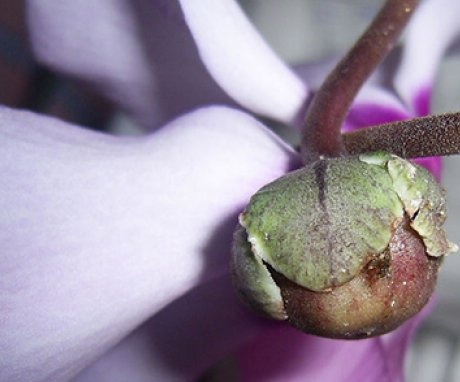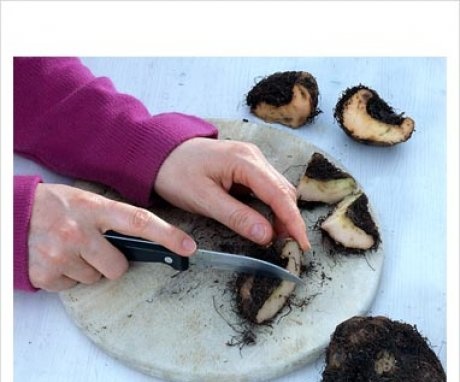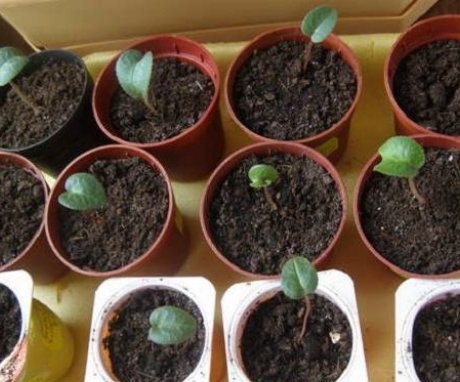How to propagate cyclamen at home
Cyclamen is one of the most popular potted plants. It is charming: compact, with beautiful flowers on long stalks and decorative leaves in silvery-green patterns.
Content:
Cyclamens are quite unpretentious plants. They have a distinct dormant period, so do not be alarmed when your pet begins to fall leaves in the spring. This process can last until May or even July.
The main types of cyclamens
Two main types of cyclamen are bred: European and Persian:
- Cyclamen European (Cyclamen europaeum). It has another name - Cyclamen Purple. It reaches a height of 30 cm. The leaves are leathery, on the dark green background of the upper side there are beautiful silvery patterns, and the lower part of the leaf is anthocyanin. The tuber is completely submerged in the soil. Blooming European cyclamen can be purchased in spring and summer. Depending on the variety, the flowers are pink, purple, white with a thin carmine stripe, or completely white. The main advantage is year-round decorativeness due to beautiful leaves. In nature, it inhabits alpine meadows, southeastern France and the mountains of southern Germany.
- Cyclamen Persian (Cyclamen persicum). On the outside, the leaves are similar to those of Cyclamen Purple, but on the underside the leaves of Persian cyclamen are green. It is on this basis that these two species can be distinguished from each other. Another distinctive feature is the location of the tuber: it protrudes above the ground level (in the cyclamen the Purple tuber is not visible). The main advantage of Persian cyclamen is that it blooms in winter. At a time when there are so few flowering plants, it stands out among all the greenery in the room with its delicate bright flowers.
Reproduction of cyclamen
How to propagate cyclamen? In two main ways: seeds or by dividing the tuber. But it is worth noting that cyclamens do not reproduce well at home.
Persian cyclamen is propagated mainly by seeds, and they do this in early spring. Before sowing, the seeds are soaked for 8 hours in the Epin Extra biostimulator, for which 4 drops of the drug are dissolved in 100 ml of water. The soil, consisting of peat and sand, is steamed or calcined in the oven. This procedure significantly reduces the likelihood of rotting the plant.
Seeds are sown to a depth of 1 cm, after watering the wells with water. Cyclamen seeds germinate in the dark, so the box with the sown seeds is covered with a black film. Crops are periodically ventilated and made sure that the soil does not dry out. After a month and a half, shoots appear, after which the film is removed, and the box with the shoots is transferred to a bright light.
The best temperature for germination and growth of cyclamen seedlings is +18 degrees.
As soon as 2 or 3 leaves appear, cyclamens begin to dive. During picks small tubers are completely covered with soil. After 6 months, the plants are planted in small pots, making sure that the tuber remains open to 1/3 of its size. Flowering occurs in about 1.5 years, so the owners of young cyclamens should be patient.
How to propagate cyclamen by dividing tubers? Tubers divide during the dormant period, when all leaves completely die off. This is a very delicate matter. The tuber is carefully removed from the pot and cleaned of soil. The tubers are cut into pieces so that each has a bud and part of the roots.
You can divide the tuber into as many parts as there are buds on it.
Places of cuts are treated with coal or ash and planted in the ground so that a small part of the tuber remains above the soil. Each part is planted in a separate pot. Water the plant in moderation, little by little.
Special difficulties in growing cyclamen
When growing cyclamen, you should pay attention to the following undesirable effects:
- yellowing leaves... The reason may be a temperature above +18 degrees and dry air in the room. To avoid yellowing, the air around the cyclamen must be humidified by spraying water in a dispersed manner, and you can maintain the optimum temperature on the windowsill, under which there is no heater;
- rotting of leaf petioles. This can be caused by waterlogging of the soil, especially when water is poured onto the top of the tuber. The pot must be placed on a tray with pebbles and make sure that the pebbles are constantly moistened;
- leaf deformation. Called by the cyclamen mite. It is so tiny that it looks like a layer of dust on the bottom of the leaves. The plant stops growing, and the edges of the leaves roll up. In this case, the affected leaves should be removed and the cyclamen should be sprayed with a regular insecticide.
Similar difficulties arise during the flowering of cyclamen. It is necessary to deal with them using the same methods as described above.




